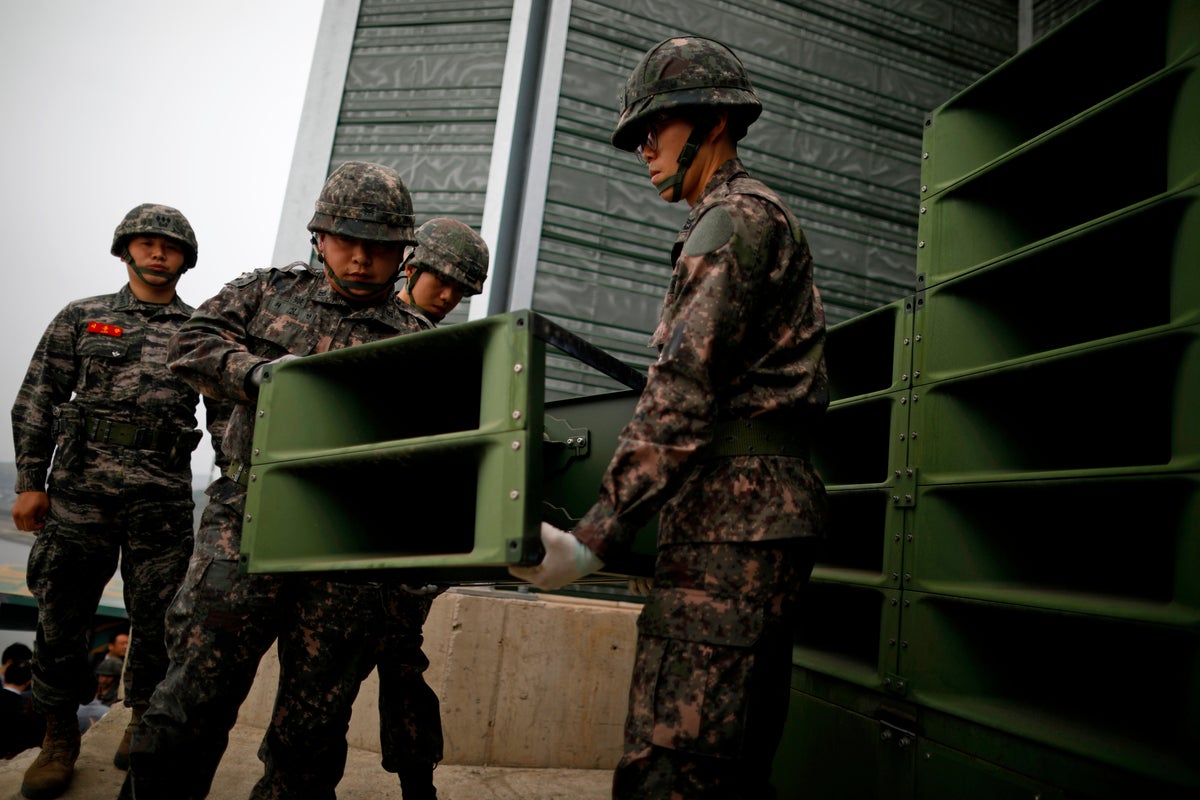
South Korea’s military on Monday said it’s detecting signs that North Korea is installing its own loudspeakers along their heavily armed border, a day after the South blared anti-Pyongyang propaganda broadcasts over its speakers for the first time in years as the rivals engage in a Cold War-style psychological warfare.
The South’s resumption of its loudspeaker broadcasts on Sunday was in retaliation for the North sending over 1,000 balloons filled with trash and manure over the last couple of weeks. North Korea has described its balloon campaign as a tit-for-tat against South Korean civilian groups flying anti-North Korean propaganda leaflets across the border. Pyongyang has long condemned it as it's extremely sensitive to any outside criticism of leader Kim Jong Un’s authoritarian rule.
Seoul’s Joint Chiefs of Staff didn’t immediately comment on the number of suspected North Korean speakers or where along the border they were spotted being installed. It said the speakers were still silent as of Monday afternoon.
South Korea on Sunday activated its loudspeakers for an initial broadcast into North Korea, which reportedly included news, criticism about North Korea’s government and South Korean pop music.
Hours later on Sunday, Kim’s powerful sister warned that the South created a “prelude to a very dangerous situation.” She said South Korea would witness an unspecified “new response” from the North if it continues with the broadcasts and fails to stop civilian activists from flying anti-North Korean propaganda leaflets across the border.
“I sternly warn Seoul to immediately case its dangerous activities that would further provoke a crisis of confrontation,” Kim Yo Jong said through state media.
Lee Sung Joon, spokesperson of South Korea’s Joint Chiefs of Staff, said Kim’s comments represented a heightened verbal threat from North Korea but he did not provide a specific assessment on the actions the North might take. Lee said the South was conducting broadcasts in sites where soldiers have sufficient protection and are equipped to swiftly hit back if attacked.
“(We) don’t think that they could provoke us that easily,” Lee said during a briefing Monday.
The Joint Chiefs of Staff didn’t specify the border area where Sunday’s broadcast took place or what was played over the speakers. It said that any additional broadcasts are “entirely dependent on North Korea’s behavior.”
The South withdrew loudspeakers from border areas in 2018, during a brief period of engagement with the North under Seoul’s previous liberal government.
In deciding to restart the loudspeaker broadcasts, South Korea’s presidential office berated Pyongyang for attempting to cause “anxiety and disruption” in the South and stressed that North Korea would be “solely responsible” for any future escalation of tensions.
The North said its balloon campaign came after South Korean activists sent over balloons filled with anti-North Korean leaflets, as well as USB sticks filled with popular South Korean songs and dramas. Pyongyang is extremely sensitive to such material and fears it could demoralize front-line troops and residents and eventually weaken leader Kim Jong Un’s grip on power, analysts say.
In 2015, when South Korea restarted loudspeaker broadcasts for the first time in 11 years, North Korea fired artillery rounds across the border, prompting South Korea to return fire, according to South Korean officials. No casualties were reported.



!["[T]he First and Fifth Amendments Require ICE to Provide Information About the Whereabouts of a Detained Person"](https://images.inkl.com/s3/publisher/cover/212/reason-cover.png?w=600)



